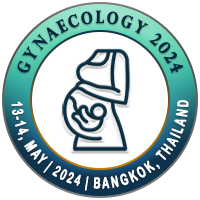
Savita Shukla
Ganesh Shankar Vidyarthi Memorial Medical College, IndiaTitle: Role of magnesium sulphate as a neuroprotective agent on neonatal outcome in preterm deliveries
Abstract
Background: Globally, prematurity is a leading cause of death in children under the age of five years and in almost all countries with reliable data, preterm birth rates are increasing. This study was conducted to compare the perinatal outcome of preterm deliveries between women receiving MgSO4 and those who were not received MgSO4.
Methods: This randomization study was conducted in department of obstetrics and gynaecology, GSVM Medical College, Kanpur, Uttar Pradesh, India, over a period of one year. After informed consent and ethical clearance from institutional ethics committee, Kanpur, total 100 pregnant women were recruited for this study and were divided into two group of 50 women each. Women in group I were subjected for MgSO4 therapy. Fetal conditions were monitored. These patients were followed up for the next 6 months for outcome.
Results: Overall maternal age ranged from 21 to 32 years. Majority of cases in both the groups were from rural areas and belonged to lower socio-economic status. Majority of women in both the groups were multigravida (68.75%) and (60%) respectively. In both groups, most common risk factors were severe anemia followed by preeclampsia. APGAR score was better in women who received MgSO4, but the difference was found to be statistically significant only for 5 minutes. Although IVH and periventricular leukomalacia rate was higher in group I as compared to that in group II. Although proportion of alive neonates was higher in group I as compared to that in group II yet there was no significant difference between two groups (p=0.961). Incidence of respiratory distress, followed by perinatal asphyxia were most common in both the groups but was not found to be significant statistically (p>0.05).
Conclusion: Proportion of those with Apgar score <7 at 1 minute, 5 minutes and 10 minutes was higher in group II as compared to group I but the difference was significant statistically only at 5 minutes evaluation.
Biography
WILL BE UPDATED SOON

